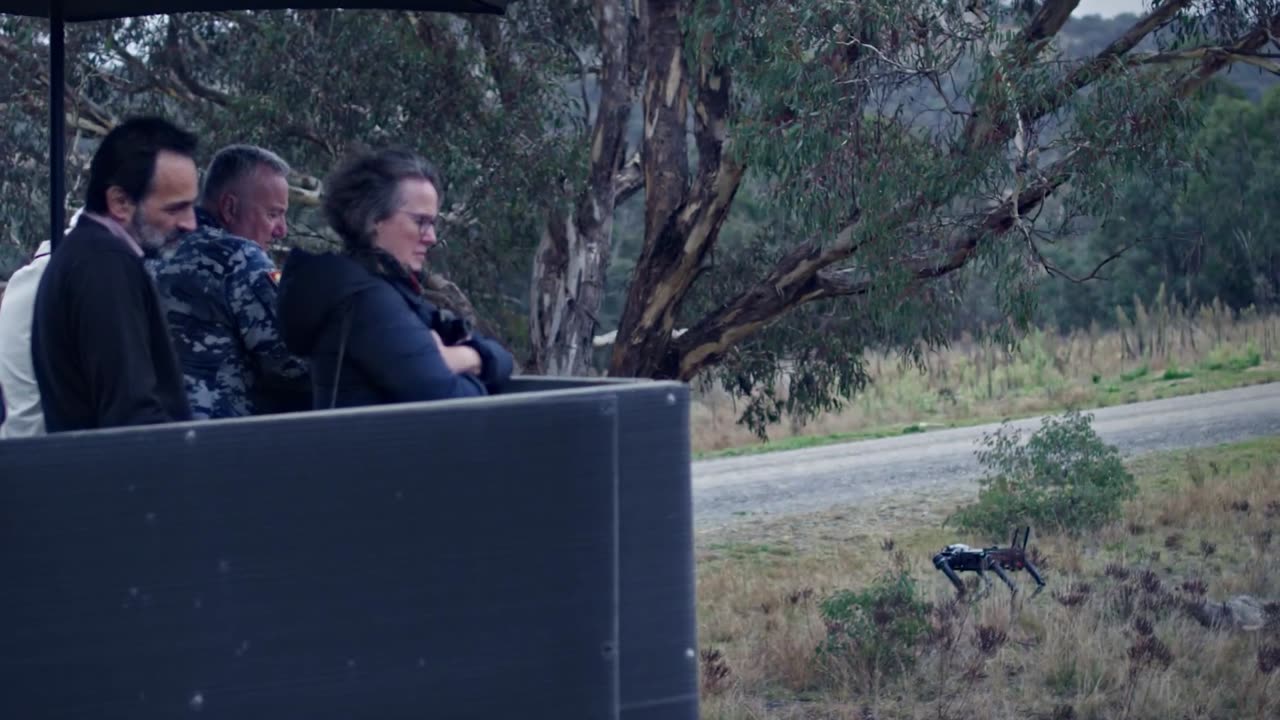Premium Only Content

Military Tests Robodog Soldiers Can Command By Thought
Military commanders in Australia are testing astonishing new technology that allows soldiers to simply think telepathic commands to robot dogs.
Previous generations of robotic dogs relied on operators with video game-style hand controllers or pre-programmed commands.
Now - say scientists - a new brain interface allows their handlers to issue commands just by thinking them.
At the same time, images and other data gathered by the robot can be sent back to the soldier's virtual headset.
In this video, Sergeant Damian Robinson, from 5th Combat Service Support Battalion, and Sergeant Chandan Rana, from 1st/15th Royal New South Wales Lancers are seen putting the new tech through its paces.
Before a group of invited experts, they can be seen using only thought to move a robodog around a series of courses Majura Training Area, Canberra, on 11th May.
Video footage shows officers marching down the road in formation with the robot dog ahead of them and then working on a makeshift battlefield linked telepathically to its operator.
The robot can be seen going over difficult terrain, and also performing in rain and mud.
Later in the video, the robodog can be seen working with a search squad as they check out a series of containers.
During testing, several white squares corresponding to waypoints flickered on Sergeant Robinson’s augmented reality lens at varying frequencies.
The commands from Sgt Robinson were passed on from a biosensor at the back of his head to detect brainwaves from his visual cortex.
When concentrated on a particular flicker, the biosensor detected the change in brainwaves and signalled an amplification circuit.
An artificial intelligence decoder then translated the signal into commands, which the robodog followed.
The HoloLens technology has been developed by University of Technology Sydney (UTS) researchers to command a Ghost Robotics quadruped robot.
Sgt Robinson explained: “The whole process is not difficult to master. It’s very intuitive. It only took a couple of sessions.
“You don’t have to think anything specific to operate the robot, but you do need to focus on that flicker."
“It’s more of a visual concentration thing.”
The purpose of the demonstration was to get soldiers thinking about how Army might integrate this technology into the tactical environment.
Researchers at UTS and the army’s Robotic and Autonomous Implementation and Coordination Office (RICO) have worked together for nearly three years to develop brain-computer interfaces.
Professor Chin-Teng Lin and Professor Francesca Iacopi, from UTS, have made key breakthroughs in technology.
Professor Lin figured out how to minimise noise from the body and environment to get a clearer signal from an operator’s brain.
Another advance was increasing the number of commands the decoder can deliver in a fixed period.
Professor Lin said: “We have nine different kinds of commands and the operator can select one from those nine within that time period.”
Professor Iacopi developed a new graphene-based biosens to improve brainwave detection.
He said: “We’ve been able to combine the best of graphene, which is very biocompatible and very conductive, with the best of silicon technology, which makes our biosensor very resilient and robust to use."
Military chiefs have provided USD 1.2 million in research funding to UTS to support robodog development.
-
 0:58
0:58
Viral Tab News
1 year ago $0.04 earnedDrug Trafficker Seized In Spain After Decade Under Radar
580 -
 23:21
23:21
Stephen Gardner
23 hours ago🔥Trump DISCOVERS exactly who BETRAYED Him!!
76.1K358 -
 11:04
11:04
Silver Dragons
6 hours agoCoin Dealer Exposes the "German Silver" Scam & MORE
31.4K6 -
 39:56
39:56
TampaAerialMedia
8 hours ago $12.19 earnedBeautiful VERMONT - 15 Towns & 7 Scenic Highways - Burlington, Woodstock, Brattleboro, & More
55.5K20 -
 1:04:24
1:04:24
Tactical Advisor
10 hours agoBattlehawk Build Of The Month /Giveaway Winner | Vault Room LIVE Stream 009
130K40 -
 2:51:26
2:51:26
I_Came_With_Fire_Podcast
18 hours ago"Houska Castle: Gateway to Hell, Nazi Occultism, & Ancient Legends"
99K37 -
 26:20
26:20
Degenerate Jay
1 day ago $10.50 earnedThe Best Transformers Movie? - Bumblebee Movie Review
71.6K12 -
 10:12
10:12
This Bahamian Gyal
22 hours agoInfluencer hired HITMEN to OFF social media rival
61K21 -
 7:05
7:05
Dr. Nick Zyrowski
1 day agoVitamin D Mistakes Most People Make - Never Do This!
52.3K7 -
 2:11:13
2:11:13
Squaring The Circle, A Randall Carlson Podcast
1 day ago#29 Thermonuclear War: Shall We Play A Game? - Squaring the Circle: A Randall Carlson Podcast
68.5K59